Czech Food: Basic Overview
Common Ingredients
Common Cooking Methods
Courses
Meals
Key Taste
Eating Etiquette
Meal Presentation
Culinary Festivals
Influence and Fusion
Popular Types of Czech Food
-
Casseroles and bakes
In Czech cuisine, casseroles and bakes often feature layers of ingredients like potatoes, meats, and vegetables.
These dishes are perfect for family dinners, especially during colder months.
-
Cakes and pastries
Czech cakes and pastries range from light, fluffy cakes flavored with fruits or nuts to rich pastries filled with jams, creams, or sweet cheese.
These baked goods also hold a special place in celebrations and family gatherings.
-
Soups
Czech soups are a diverse bunch, from thick, creamy varieties to clear, brothy ones.
Ingredients like potatoes, mushrooms, and garlic are common, making these soups both flavorful and nourishing.
Often served as a starter in meals, they’re also enjoyed as a standalone dish, especially during chilly weather.
-
Stews
Czech stews are all about slow cooking, allowing flavors to meld and meats to become tender and juicy.
These dishes often feature pork or beef, seasoned with spices like caraway and garlic, and are usually served with dumplings or potatoes.
-
Dumplings
Czech dumplings are a big part of meals, especially when there’s a saucy dish on the table.
Made mostly from flour, yeast, and sometimes bits of stale bread, these dumplings soak up all the good flavors from the dish they’re paired with.
They come in different types, like fluffy bread dumplings or hearty potato ones.
Czech dishes are common culinary creations savored in the Czech Republic, a landlocked country in Central Europe. Influenced by neighboring culinary traditions, Czech cuisine incorporates elements from Germany treats, Austrian gourmet dishes, Hungarian culinary gems, and Slovak epicurean delights.
The essence of Czech cuisine features a strong emphasis on meats, potatoes, dumplings, and sauces. Pork, beef, and chicken are the most common types of meat, often accompanied by a variety of side dishes that include the famous Czech dumplings (knedlíky).
Czech cuisine is known for its robust and hearty flavors, often featuring savory and mildly spiced dishes rather than those that are overly hot or spicy. Seasonings such as marjoram, caraway, dill, and garlic are frequently used.
The Czech cooking method traditionally involves simmering, stewing, and roasting. Soups also hold a special place in Czech culinary tradition, serving as a common starter for many meals.
Czech cuisine is not just about savory dishes; it also boasts a variety of pastries, cakes, and other sweet treats.
In addition to exploring famous Czech dishes, I’ve delved into the traditional aspects, global appeal, and health benefits of the country’s cuisine. You’ll also learn about Czech dining customs and tips for pairing food and drinks.
30 Popular Czech Dishes with Filters
Below are 30 popular Czech dishes, listed according to how popular they are. You can utilize the filtering capability to refine your search across ingredients, flavor profiles, cooking methods, dish types, and times for meals.
It facilitates the discovery of a wide array, from traditional dishes and national favorites to local street fare.
Guláš
- Street Food
- Traditional
Guláš is a hearty stew known for its rich and robust flavor profile, often found in Central European cuisines and deeply ingrained in Czech culinary traditions. Traditionally, it’s made with chunks of meat, usually beef, onions, and various spices, including paprika.
Czech guláš is a comforting emblem of national cuisine, often enjoyed in homes and restaurants nationwide.
While variations abound, some notable ones include beer guláš, where beer is used to add depth and flavor, and venison guláš, offering a gamey twist to the classic.
Its taste is a warming balance of meaty richness, subtle spice, and savory depth, making it a favorite during colder months or as a fulfilling meal after a day’s work.
Svíčková
- National
- Traditional
Svíčková, also known as Svíčková na smetaně, is a national Czech dish that features tender beef, typically sirloin, bathed in a creamy vegetable sauce, nuanced with a hint of lemon and cranberries.
As a traditional dish, Svíčková holds a place of honor on Czech tables, especially during significant celebrations such as weddings and important family milestones.
Its taste elegantly combines the succulence of the meat with the slight tang and sweetness of the sauce, creating a luxurious and comforting experience.
Smažený Sýr
- Street Food
Smažený sýr is a beloved Czech dish featuring deep-fried cheese, offering a crispy exterior with a gooey, melted cheese core.
This dish is typically made with Edam, Gouda, or Hermelín cheese, and is served with a side of tartar sauce and sometimes a portion of fries, creating a perfect balance of crunchy, creamy, and tangy flavors.
Smažený sýr’s widespread popularity makes it an everyday indulgence during casual outings and festive gatherings.
Trdelník
- Street Food
- Traditional
Trdelník, also known as “chimney cake,” is a traditional Czech pastry that has gained fame far beyond its origins, particularly as a street food delicacy.
This sweet treat is made from rolled dough wrapped around a stick, then grilled and topped with a sugar and walnut mix, resulting in a warm, caramelized exterior with a soft, doughy inside.
The pastry’s distinctive spiral shape and the enticing aroma of it being freshly made draw both locals and tourists to street vendors, especially during the holiday season and at Christmas markets.
While traditionally plain, modern variations include fillings or toppings like ice cream, chocolate, and fruit, adding a contemporary twist to this historic confection.
Bramboráky
- Street Food
Bramboráky, also known as Czech potato pancakes, is often enjoyed as a hearty street food in the country. It is characterized by a crispy exterior and soft, flavorful interior, infused with the distinct taste of garlic, marjoram, and sometimes caraway seeds.
Although they are delicious in their simple form, some variations include the addition of meat or sauerkraut, offering a delightful twist to the classic recipe. The savory and slightly spicy taste of bramboráky makes them a comforting food, especially during the colder months.
Česnečka
- Traditional
Česnečka is a Czech garlic soup particularly famous for its robust garlic taste, complemented by potatoes, onions, and a rich broth, often embellished with a dollop of cream and cheese.
Česnečka is not just a regular meal; it’s also touted as a remedy for colds and flu, showcasing its place in Czech culture as a dish with healing properties.
Besides being a staple enjoyed throughout the year, česnečka gains special significance during the Christmas season, where it’s a common precursor to the main festive meals.
Vepřo Knedlo Zelo
- National
- Traditional
Vepřo knedlo zelo, a cornerstone of Czech national cuisine, comprises three main components: roast pork (vepřo), dumplings (knedlo), and sauerkraut (zelo).
The roast pork is tender and juicy, often seasoned with garlic and caraway seeds, while the dumplings, light and fluffy, serve as the perfect vehicle for the tangy and slightly sweet sauerkraut.
Vepřo knedlo zelo is commonly enjoyed during important national holidays and family gatherings, bringing warmth and joy to the table.
Palačinky
- Street Food
- Traditional
Palačinky, akin to French crêpes, is a versatile and beloved part of Czech cuisine, often enjoyed as a sweet treat or a savory snack.
These thin pancakes can be rolled up with a variety of fillings, from the simple yet delightful sprinkle of sugar and a squeeze of lemon juice to more elaborate stuffings like jam, fruit, nuts, chocolate, or even cottage cheese.
For those favoring savory over sweet, palačinky can be filled with meat, spinach, or mushrooms. This dish is a popular choice for a casual dessert or a light meal, often shared with family and friends during casual gatherings or as a weekend treat.
Knedlíky
- Traditional
Knedlíky refers to Czech dumplings made primarily from flour, yeast, egg, and sometimes stale bread cubes, which lend a unique texture. They are typically sliced and served alongside rich, meaty dishes like goulash or roast pork, where they excel at soaking up sauces and gravies.
Knedlíky can vary in type, with bread dumplings being the most common, but potato dumplings are also popular. The taste of knedlíky is mildly yeasty and comforting, providing a satisfying balance to the bold flavors of the main dish they accompany.
Buchty
- Traditional
Buchty is Czech soft, yeast-leavened buns filled with a variety of sweet ingredients, such as plum jam, poppy seeds, or sweetened quark. These buns are a testament to the Czech love for comforting, home-baked goods, often associated with warmth and familial care.
Buchty can be found in cozy Czech kitchens and bakeries, their sweet, aromatic scent inviting a moment of indulgence. During traditional celebrations, such as Christmas and Easter, buchty takes a special place on the festive table.
Sekaná
- Traditional
Sekaná, known as Czech meatloaf, is a traditional Czech savory delight made from a blend of ground meats, often pork and beef, mixed with onions, garlic, eggs, and spices, then baked to perfection.
The outer crust is typically golden and slightly crisp, giving way to a moist, flavorful interior. Sekaná is often served with boiled or mashed potatoes and a side of pickled vegetables.
Its rich and hearty taste makes it a favored choice for family dinners, especially during colder seasons.
Rajská Omáčka
- Traditional
Rajská omáčka, translating to “paradise sauce,” is a unique and traditional Czech tomato-based sauce that’s both sweet and slightly tangy. This sauce is typically served over beef or pork cuts and accompanied by knedlíky (Czech dumplings).
The smooth, velvety texture of the sauce and its distinctive sweet-tart flavor profile provide a delightful contrast to the savory meat and the soft, pillowy dumplings.
Rajská omáčka is often enjoyed during family gatherings and Sunday meals. Its comforting and homey taste brings a sense of nostalgia and warmth to those who grew up with this classic Czech dish.
Kulajda
- Traditional
Kulajda is a traditional Czech soup known for its creamy base and distinctive combination of dill, potatoes, mushrooms, and a poached egg on top. This soup offers a slightly tangy and savory taste, complemented by the earthiness of mushrooms and the freshness of dill.
Kulajda has its variations, with some recipes incorporating vinegar or sour cream to adjust the soup’s tartness. It’s a staple in Czech households and a dish that brings families together, especially during colder months or on occasions that call for a hearty, comforting meal.
Uzené
- Traditional
Uzené, referring to smoked meat in Czech cuisine, is a beloved ingredient that adds depth and rich flavor to many dishes. This preparation method involves curing the meat, usually pork, and then smoking it to achieve a tender texture and a distinct smoky aroma.
Uzené can be enjoyed on its own, accompanied by bread and mustard, or used as a key component in various traditional dishes, such as soups and stews, to enhance their flavor.
The taste of uzené is robust and satisfying, making it a popular choice for festive occasions and family gatherings.
Bryndzové Halušky
- Traditional
Bryndzové halušky, a quintessential Slovak dish often enjoyed in the Czech Republic as well, is a delightful ensemble of potato dumplings (halušky) mixed with a unique sheep cheese (bryndza) and topped with crispy bacon pieces.
The creamy and tangy taste of bryndza cheese perfectly complements the soft, chewy texture of the dumplings, while the bacon adds a savory crunch.
Bryndzové halušky is a staple dish and takes center stage during various local festivals and celebrations, particularly those highlighting folk traditions and culinary heritage.
Smažený Řízek
- Street Food
- Traditional
Smažený Řízek, translating to fried schnitzel, is a beloved dish in Czech cuisine, drawing inspiration from Austrian culinary traditions but with a distinct Czech twist.
This dish involves tenderized cuts of meat, such as pork, chicken, or veal, that are breaded and fried to golden perfection. The result is a crispy outer layer with a juicy, flavorful interior.
It’s commonly served with potato salad or mashed potatoes and is a versatile favorite enjoyed at family gatherings, traditional Czech restaurants, and even as a holiday festive meal.
Ovocné Knedlíky
- Traditional
Ovocné knedlíky, translating to fruit dumplings, is a cherished Czech dish often served as a delightful dessert or a sweet main course. This dish features dumplings made from potato or dough, filled with various fruits, such as strawberries, apricots, or plums.
The dumplings are then boiled and often garnished with a topping of melted butter, sugar, and sometimes a sprinkle of poppy seeds or cottage cheese.
The taste of ovocné knedlíky is a harmonious blend of the sweet and tart flavors of the fruit encased in a soft, slightly savory dumpling.
These fruit dumplings are special in Czech culinary traditions, enjoyed during family gatherings and summer months when fresh fruit is abundant.
Obložené Chlebíčky
- Street Food
Obložené chlebíčky, often referred to as Czech open-faced sandwiches, are a staple in Czech cuisine known for their variety and creativity.
These small, appetizer-sized sandwiches start with a slice of baguette or a similar type of bread, then artfully topped with various ingredients such as meats, cheeses, eggs, vegetables, and condiments.
The taste and composition of obložené chlebíčky can vary widely, offering a palette of flavors ranging from the creamy and savory to the fresh and tangy. This dish is a popular choice for social gatherings, celebrations, and as a quick, satisfying snack.
Koláče
- Traditional
Koláče, a traditional Czech pastry, is beloved for its versatility and sweet comfort. This delightful treat consists of a soft, yeast dough base, topped with various sweet fillings such as fruit jams, poppy seed mix, or sweetened farmer’s cheese.
Often found in bakeries and households alike, koláče is a symbol of hospitality and celebration in Czech culture. They are especially prevalent during festivals like weddings, Easter, and Christmas.
Tatarák
- Traditional
Tatarák, also known as steak tartare in Czech cuisine, is a refined dish of finely chopped raw beef, typically seasoned with spices, onions, egg yolk, and other condiments.
This dish is considered a delicacy and is often enjoyed in restaurants or as a special meal at home. The taste of tatarák is rich and savory, with the beef’s freshness complemented by the seasonings’ piquancy.
Tatarák is a dish that brings people together, often enjoyed in a social setting where its preparation and presentation can be part of the dining experience.
Pečená Kachna
- Traditional
Pečená kachna is a sumptuous Czech roasted duck dish that is both traditional and deeply comforting. This delectable meal is typically seasoned with a blend of spices, such as marjoram and caraway seeds, and then slow-roasted to achieve a crispy skin and tender, flavorful meat.
It’s often accompanied by red cabbage and knedlíky (Czech dumplings), making for a hearty and satisfying dish. Pečená kachna is especially enjoyed during festive occasions like Christmas and family gatherings, bringing warmth and joy to the table.
Bramboračka
- Traditional
Bramboračka, known as potato soup in the realm of Czech cuisine, is a heartwarming and traditional soup with a rich broth infused with the earthy flavors of potatoes, mushrooms, carrots, celery, and aromatic spices.
This soup offers a nourishing and flavorful meal perfect for chilly evenings. Bramboračka is more than just a soup; it’s a staple in Czech households, often enjoyed as a starter during festive meals and gatherings.
Žemlovka
- Traditional
Žemlovka, or zemlbába, is a traditional Czech baked dish that marries the comforting textures and flavors of day-old bread, apples, eggs, milk, and sugar, often with a sprinkle of cinnamon.
The taste of žemlovka is a comforting blend of the soft, custardy bread soaked in sweet milk, juxtaposed with the slight tartness of the apples. All brought together with the aromatic warmth of cinnamon.
Žemlovka is especially cherished during the colder months, providing a sense of warmth and nostalgia, and it’s not uncommon to find it gracing the table during family gatherings and festive occasions.
Kyselo
- Traditional
Kyselo is a traditional Czech soup from the Šumava region. It has a unique and distinctive taste, primarily owing to its sour rye bread base and the addition of mushrooms and caraway seeds.
The sourness of the fermented rye starter, the earthy tones of mushrooms, and the slight spice of caraway make kyselo a soup with a complex and satisfying taste profile.
Traditionally, kyselo is enriched with a poached egg and served with potatoes, making it a hearty and comforting meal, particularly appreciated during the cold, harsh winters.
Utopenci
- Street Food
- Traditional
Utopenci, which intriguingly translates to “drowned men,” is a traditional Czech appetizer with pickled sausages. These sausages are marinated in vinegar, onions, spices, and sometimes pepper and bay leaves.
Utopenci is commonly found in pubs and is a popular accompaniment to Czech beers, making them an integral part of the country’s pub culture. The taste is a unique combination of savory, spicy, and slightly sour, appealing to those who enjoy a bold and zesty flavor.
Bábovka
- Traditional
Bábovka is a beloved Czech dessert with a special place in the nation’s culinary tradition. This light, fluffy cake is often flavored with lemon or almonds and can contain a swirl of cocoa or chocolate, giving it a marbled appearance.
Bábovka is a versatile treat, enjoyed in its simple form or dressed up with fruits, nuts, or powdered sugar. The taste of bábovka is comforting and homey, with a tender crumb that’s perfect for any occasion, from daily tea time to festive celebrations.
Zelňačka
- Traditional
Zelňačka is a hearty and traditional Czech soup known for its distinctive use of sauerkraut as the main ingredient, giving it a unique sour flavor profile. This comforting soup is often enriched with smoked meat, potatoes, and various spices.
Zelňačka is often enjoyed during the colder months for its warming properties. The soup’s tangy and savory taste, combined with the meat’s smokiness, makes it a favorite among those who appreciate robust flavors.
Vánočka
- Traditional
Vánočka is a traditional Czech braided bread that resembles a larger version of challah. It is rich with eggs, milk, and butter with a soft and fluffy texture.
Vánočka is often studded with raisins and almonds and can be lightly dusted with powdered sugar for a festive touch. The bread’s sweet, slightly nutty flavor and tender texture make it a holiday favorite, enjoyed as part of the Christmas Eve dinner or breakfast on Christmas Day.
The preparation of vánočka is steeped in tradition, with various braiding techniques passed down through generations, symbolizing the care and joy of the holiday season.
Houbový Kuba
- Traditional
Houbový kuba is a traditional Czech dish that serves as a heartwarming example of the country’s culinary ingenuity. This wholesome meal is primarily made from pearl barley and mushrooms, providing a rich and earthy flavor.
Often enjoyed during Christmas, houbový kuba is seasoned with garlic, marjoram, and caraway seeds, which lend a distinctive and aromatic taste.
Krupicová Kaše
- Traditional
Krupicová kaše is a simple yet delightful dish typically made from semolina flour cooked with milk, resulting in a smooth and velvety texture.
Sweetened with sugar and enriched with a knob of butter or a sprinkle of cocoa powder, cinnamon, or fruit, rupicová kaše is a versatile dish that can cater to various taste preferences.
Its mild, sweet flavor and comforting warmth make it a popular choice for breakfast or a light supper, especially during the colder months.
What Is Czech Dining Etiquette?
Here is an overview of the key aspects of Czech dining etiquette, showcasing the blend of traditional practices and modern manners that echo the nation’s rich cultural heritage:
Understanding this etiquette sets the perfect stage for exploring which beverages can enhance the Czech dining experience, bringing out the best in each dish.
Which Beverages Best Pair with Czech Dishes?
Here are some beverages that traditionally pair well with Czech dishes:
Consider the balance of flavors when pairing Czech refreshing beverages with dishes. A general rule is to match the dish’s weight with the drink’s weight—lighter dishes with lighter drinks and heavier dishes with more robust beverages.
I hope you’ve discovered some intriguing dishes in this list. Do any stand out to you? Share your thoughts and any questions about Czech cuisine in the comments below. And don’t forget to share this article with friends who might also be interested in exploring Czech culinary delights.



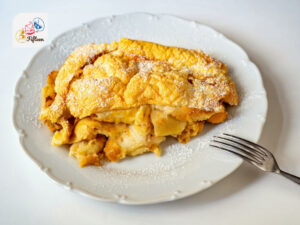
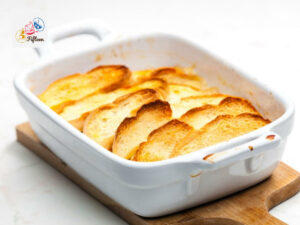
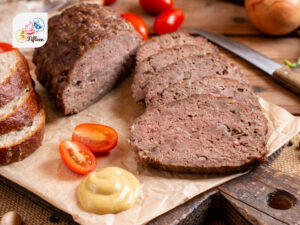
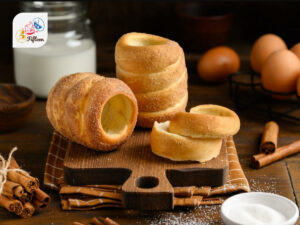

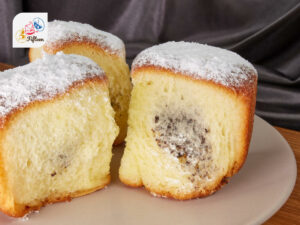

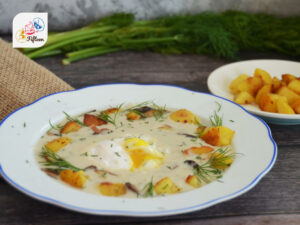
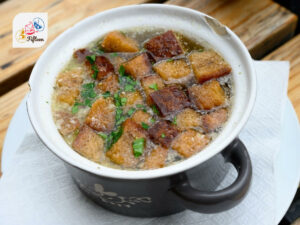
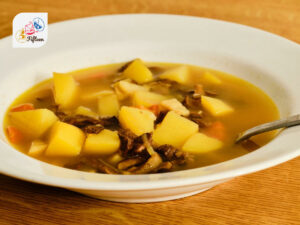
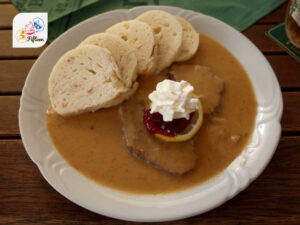
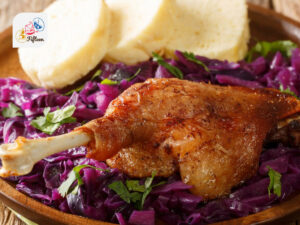
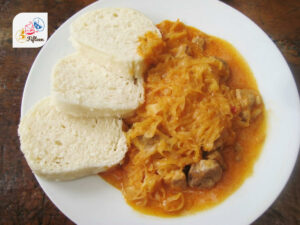
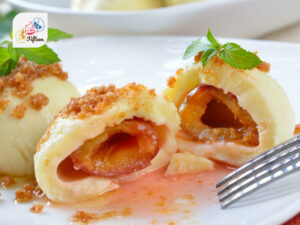
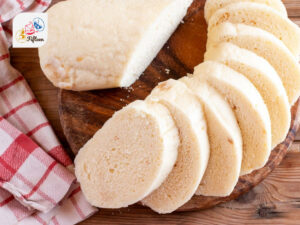
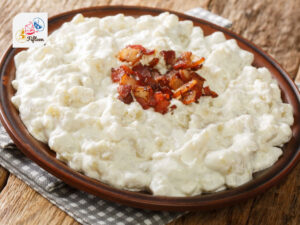
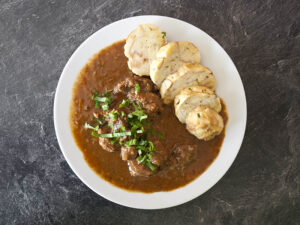
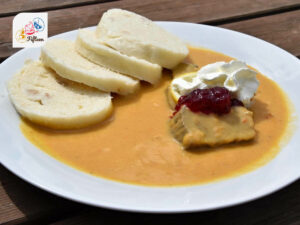
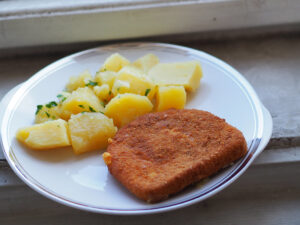


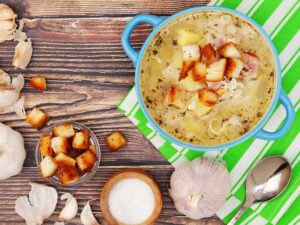
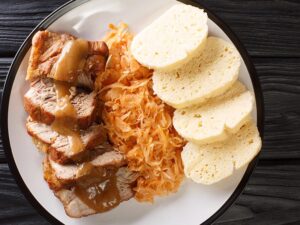
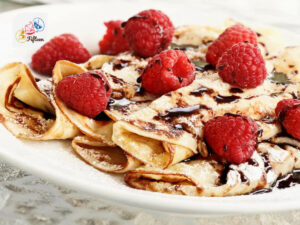
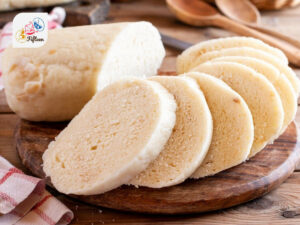

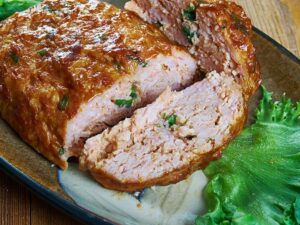
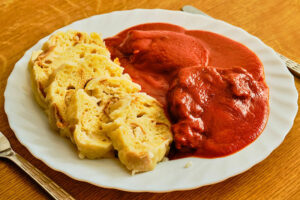
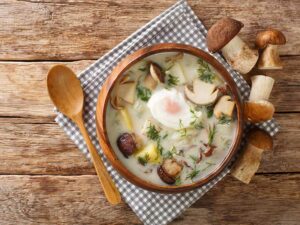
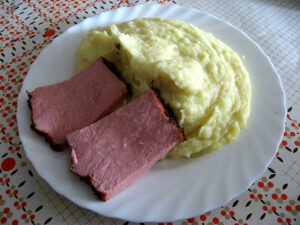
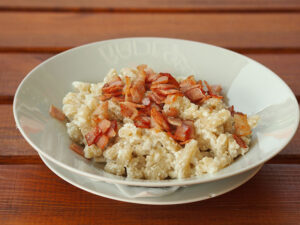
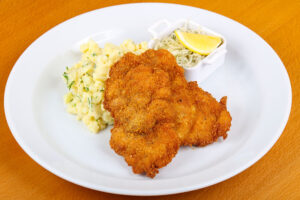
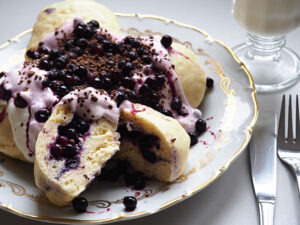
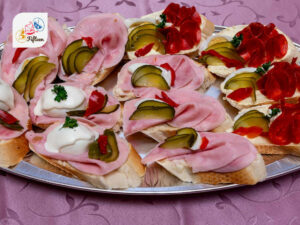

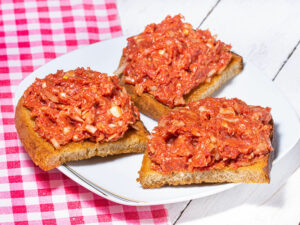
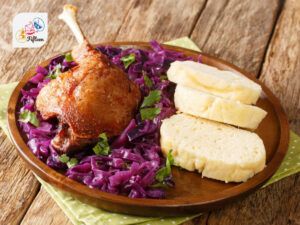
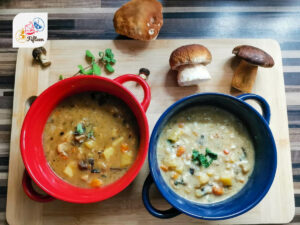

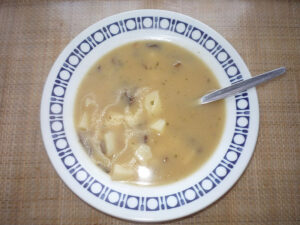
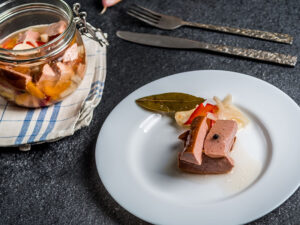

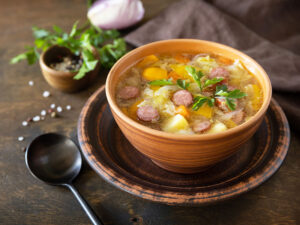
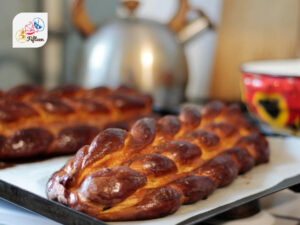
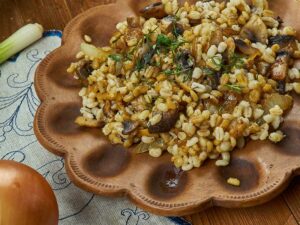
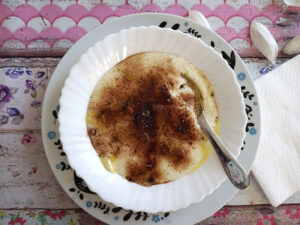
Jamie Scott
Editor in Chief, Senior Content Writer
Expertise
Home Cooking, Meal Planning, Recipe Development, Baking and Pastry, Food Editor, Cooking-video Maker, Western Food Evaluation Expert
Education
Le Cordon Bleu College of Culinary Arts
Local Community College, New York, NY
Jamie Scott is a skilled culinary expert and content creator specializing in Western cuisine. With over 15 years in the culinary field and formal training from Le Cordon Bleu, Paris, Jamie deeply understands how to blend nutrition with delicious flavors. His passion for cooking matches his commitment to making healthy eating accessible and enjoyable.
On Fifteen.net, Jamie brings a fresh perspective to classic dishes and beverages, offering readers insightful recipes, cooking tips, and a fresh view on meal planning that emphasizes taste, health, and simplicity.